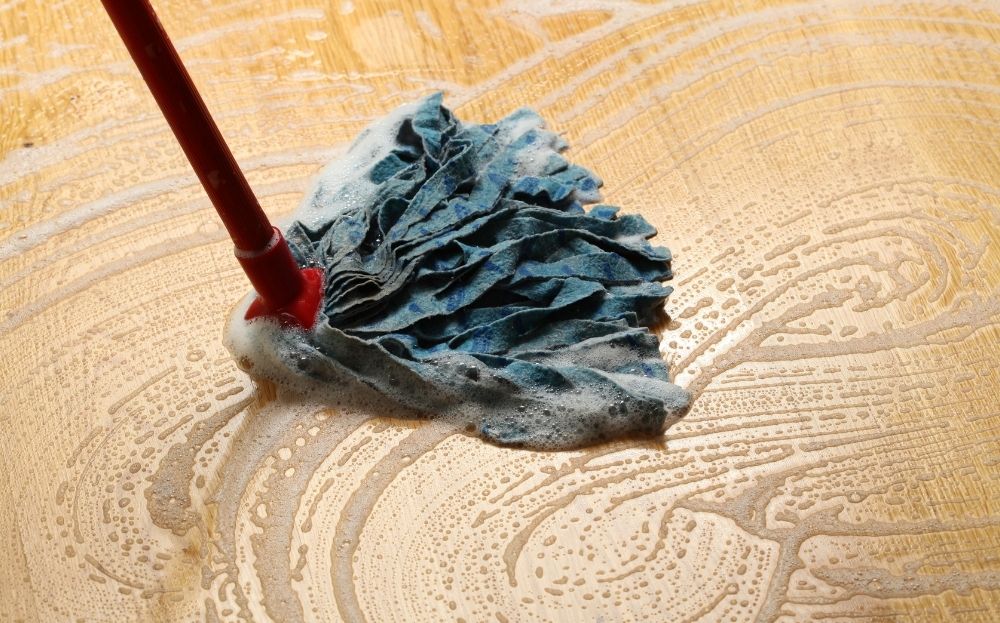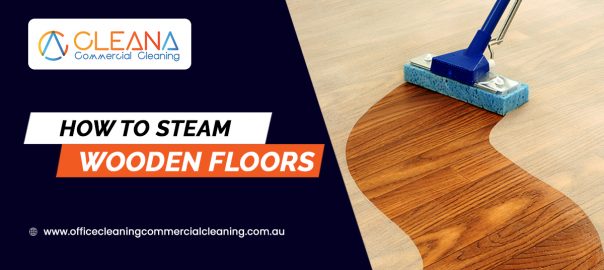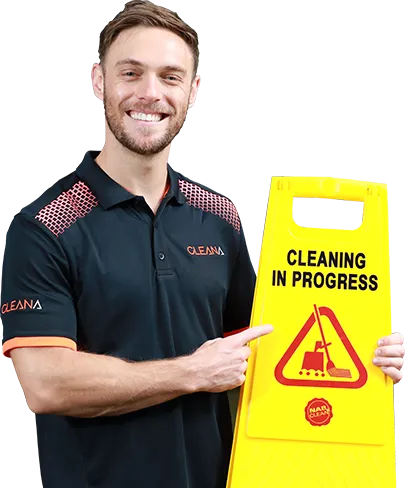Wooden floors are stylish and timeless. They fit into almost every home and with every interior design.
However, anyone with timber flooring knows that this type of floor also has the incredible ability to show every bit of dirt, debris, and pet hair.
Of course, this can be a good thing as you will know exactly where to clean getting rid of all the unwanted grime. And if you don’t know then commercial cleaning services providers will make things easy for you.
Unlike carpet, wooden floors don’t hold any hidden allergens or germs underneath the surface which makes this flooring ideal for everyone suffering from allergies to dust and house mites.
Although wooden floors are relatively quick and easy to clean, there are a few things you need to look out for.
In this article, we explore how to clean your wooden floors and what to do to keep them beautiful and elegant for longer.
Types of Wood Flooring
There is no doubt. The look of hardwood flooring with its natural tones and beautiful grain is just incomparable.
Together with the general characteristics of long-lasting and durable, hardwood flooring comes in many varieties, just like other flooring options.
Each timber has its own unique feel and look. It’s a good idea to familiarize yourself with the types of wood available for flooring.
This will give you an understanding of what particular grain pattern and tone would suit your home’s design.
But knowing the type of wood on your floor is not only handy for cleaning. It also tells you how durable the timber flooring is and how much damage from a lively household the wood can withstand.
For example, cheap wood with a polyurethane coating on the surface can easily absorb water and cause your floorboards to weaken and crack over time.
Types Of Wood Floor Finish
Before you start cleaning your timber floor, you need to know what type of wood and wood finish you have, as this can influence what cleaning products you can use.
If you are not sure about your wood floor finish, use a teaspoon to add 3 to 4 drops of water to the floor. Leave the water for a couple of minutes.
If the water has soaked into the wood, you either have a varnished or unfinished floor. Some damaged wood floors also hold the water. This makes them difficult to clean without damaging the floor further.
On the other hand, floors with an acrylic and polyurethane finish will leave water droplets on the surface.
The majority of modern wooden floors are coated or sealed which makes them much easier to clean compared to unfinished wood.
How To Clean Wooden Floors: Step By Step?
It’s a common misconception that tiles or vinyl are much easier to clean and don’t require as much maintenance. Many consumers also believe that cleaning and maintaining timber floors is an endless daily chore.
However, hardwood timber floors are not just durable, but for everyone who knows how to look after their wooden floor in the right way, cleaning becomes much easier.
What You Will Need To Clean Your Timber Floor?
For the different steps towards a clean and shiny hardwood floor, you will need:
- Bucket
- Mop
- Vacuum cleaner
- Luke warm water
- Cleaning product designed for timber floors
Please be very cautious with any type of chemical cleaner product on your timber floor as they can have adverse effects on the wood.
Steps To Clean Your Wooden Floors
The first thing you need to know about cleaning wooden floors is that moisture is dangerous. Excessive wetness can cause staining to the wood, and if the water seeps in between the gaps, it can also warp the floorboards.
That’s why ensure with each step to clean the wooden floors that you don’t use too much water.
Also, the right kind of mop, ideally designed for timber floors, means you can avoid scratches. Microfiber mops are best for this, and they also stay only damp.
With these tips and the knowledge of what type of timber floor you have, you are ready to start cleaning without damaging your floor.
Step 1: Sweeping And Removing Dust From Your Wooden Floor
Most of the time, dust and debris are the primary reasons for tired-looking floors.
Before you do any other type of cleaning and to avoid any unsightly smears, you should sweep the floor and remove any dust.
The easiest way to do this is to vacuum the floor as it quickly picks up any pet hair, dried dirt, and dust.
However, make sure that you only use the brush attachment to avoid scratching the wooden floor surface.
It’s also worthwhile going over the attachment with your hands to ensure there are no sharp edges.
A great alternative to vacuum cleaners is electrostatic brooms. Any dust and debris cling to the bristles of the broom.
This keeps you from having to go over the same area more than once.
Another fantastic advantage of an electrostatic broom is that you can pick up dust from any tricky corners or spaces that are hard to get to with a vacuum cleaner.
If you don’t have an electrostatic broom, you can also use a soft-bristle broom as it has a similar effect and doesn’t damage your floors.
How often you want to sweep or vacuum your wooden floors depends on how many people live in the house and whether you have any pets.
For some, once a week is fine, while most families will likely have to clean their floors a little more often.
Step 2: Removing Grime And Grime From Your Timber Floor
The second step is to get rid of this sticky layer of grime and dirt on your floor.
Whether your floor is solid timber, engineered timber or stabilized solid, the cleaning process for these is all the same.
All you need to do now is to put a little warm water into a bucket and lightly go over the floor with the damp mop.
For the more sticky surfaces, you can also use a light homemade cleaning solution with water and baking soda, which is very effective for regular mopping.
Soiled or stained hardwood floors, on the other hand, may need an alkaline water-based cleaning solution for a thorough cleaning.
While this is generally a safe product to use on polyurethane-finished wood, it is important to dilute it with enough water before mopping the floor.
For all these options, always make sure that the water is not hot, and that the mop is not wet. When mopping hardwood floors, you should also regularly wring the mop head properly so that it is merely damp.
Bear in mind that the floor shouldn’t be too damaged, otherwise it’ll soak up even a small amount of moisture, causing the wooden floor to warp.
Alternatively, you can also use a microfiber mop with a spray water bottle. This will help distribute the right amount of water, and it’s super quick to pick up the mop and go over your floors.
It’s essential that you do not steam clean your timber floor. Wood is a natural product and using any kind of steam cleaning method will cause your floorboards to warp, and ultimately crack.
You should also avoid the use of detergents and other household cleaners that are not designed for wooden floors. Exposing your timber floorboards to any kind of chemicals could cause permanent damage.
Step 3: Buff for Professional Results
When you mopped your timber floors and dried them, you might be satisfied with the results.
For a truly sparkling and professional wooden floor look, you may want to go a step further and buff your floors after they have dried.
You can use a buffing machine for this, or alternatively, you can buff your timber floor by hand.
If you want to buff your floor by hand you can use a homemade solution of white vinegar and water. Add some of it on a soft cloth, such as a baby cloth diaper, and gently buff in circular motions on the floor.
Allow the floor to dry up and you can enjoy the beautiful, shiny results making your wooden floor look like new.
Alternatively, if you are not keen on getting onto your knees, you can use a microfiber mop and a buffing solution specifically designed for timber floors to buff a larger floor area.
Before you use any kind of product on your timber floor, we would highly recommend that you spot-test it on a small patch on your floor to make sure it doesn’t stain or damage the floorboards.
Should You Use Timber Floor Cleaning Products?
For the regular cleaning process, you would usually only use water to clean your timber flooring but if the sticky surface layer of dirt is too tough, you will need to use a stronger cleaning solution.
If your floorboards are “pre-finished”, meaning they have been acclimatized and coated in a factory, you can use almost any kind of cleaning product or alcohol on them.
However, if your floor isn’t prefinished, which is usually the case with solid timber flooring, then it’s important that you don’t use any chemical-based cleaning solutions.
Many floor cleaning products react to the varnish of the wooden floor and leave a cloudy look on the surface.
It’s a good idea to walk into your local DIY store or supermarket, and take a look at the range of different solutions for cleaning timber floors. This will give you an overview of what cleaning solution you may be able to use.
If in doubt, ask a staff member who might be able to advise, or the company that installed your timber flooring as they typically know their woods inside out, and will be able to help on what best to use for cleaning this particular timber.
Whatever timber cleaning product you choose, always test on a small area first and wait for a while before doing the rest of the floor.
Do’s And Don’ts When Cleaning A Hardwood Floor

Here is a list of what you should do when cleaning your floor and a few pointers on what definitely to avoid when sprucing up your timber flooring.
What You Should Do When Cleaning Timber Flooring
- It’s essential that you check for any scratches or damage on the surface at least once a month. You want to avoid any damaged floor from getting worse over time. If needed, call in a professional to refinish the floor.
- Sweep the floor regularly so dirt and grime don’t get stuck or dragged around causing scratches.
- Soak up any spills immediately to prevent excess moisture on the wooden floor surface.
- Help protect the floor from harsh sunlight with rugs or carpets.
- Use rubber protectors on furniture legs so moving furniture doesn’t leave any marks or scratches.
- Make sure that the water you use for mopping hardwood is not too hot or too cold as this can dull or warp the floor.
What You Should Avoid When Cleaning Timber Flooring
- Ensure that you don’t use any abrasive cleaning tools or scrubbers, as they would remove the protective stain from the floor’s surface. It’s best to stick to soft-bristled brushes or clothes.
- Don’t use wax-based cleaning products as they usually leave a film on the wooden surface. This attracts more grime and dirt.
- If possible, avoid walking over a hardwood floor with spiked shoes or high heels.
- As moisture and any excess liquid is enemy number one for timber flooring, don’t leave any wet or dam items lying on the floor for too long.
How To Protect Your Wooden Floors From Damage?
All cleaning methods for your hardwood floor are geared towards protecting your floor from damage for as long as possible.
In fact, keeping your hardwood timber flooring elegant and beautiful starts with prevention.
This will ultimately cut down any time spent on cleaning and maintaining your floor.
Besides avoiding any damage during the cleaning process, there are a number of other steps you can take to help protect your floor from damage.
Use Mats
It’s a good idea to use mats on all entrance doors to the floor. This will limit the amount of mud, sand, dirt, and other grime entering your home.
Add Rugs
When you cover parts of your floor with rugs or carpet, you can keep your timber floor underneath clean from dirt and protect it from any scratches or marks.
Protective Pads
The most common culprit of scratches on wooden floors is furniture. You can avoid this by adding protective pads under heavy items like appliances and furniture.
This will stop, for example, chair legs or the base of the sofa rubbing against the timber.
Groom Your Pet
Keeping your pet’s nails short with regular clipping helps to avoid any scratches. Also, regularly brushing your pet means you have less hair to sweep up during the cleaning process.
Reduce Sun Exposure
You may not want to keep your window blinds or shades closed all day but bear in mind that excessive sun exposure can lead to fading of your timber floor.
As the sun also dries out your floor, this makes it brittle and can result in cracked floorboards.
Walk Barefoot
Shoes are another popular culprit for grime, dirt, and marks on floors. Especially sports shoes and high heels can inflict serious damage on floorboards.
So, why not leave your shoes by the door and enjoy the natural feel of your wooden floor?
It’s a good idea to have a bench or chair next to the door. This encourages everyone to take their shoes off before coming inside.
Good Ventilation
Good airflow through your home prevents excess humidity and moisture from building up. This will prevent floorboards from swelling.
What To Do When Timber Floorboards Are Damaged?
Marks from children’s toys, furniture maneuvering, or shoes are all the signs of a lively house, and although timber floors are resilient to many of these attacks, they will succumb to wear and tear eventually.
Even with the best care, cleaning and maintenance, wooden floors can become damaged and scratched over time.
If your floorboards are unsightly despite cleaning, you should consider a wooden floor restoration.
It’s best to call a qualified flooring professional to review your hardwood floor and advise any treatment.
Most professional floor restorations involved sanding and polishing your timber floors, which can lift not only the look of your floor but instantly brighten up your room.
A big plus, you can also choose from a wide range of stain colours giving your home a new look with professional sand and polish.
Conclusion
Most modern hardwood flooring generally comes in the form of either solid hardwood, which is solid wooden boards, or engineered hardwood, which is essentially plywood with a surface layer.
These different types of floors do not just vary in purchase costs, but also in how they should be cleaned.
Whatever type of timber flooring you choose, they all need maintenance and regular cleaning to keep them beautiful and create a space you feel naturally comfortable.

